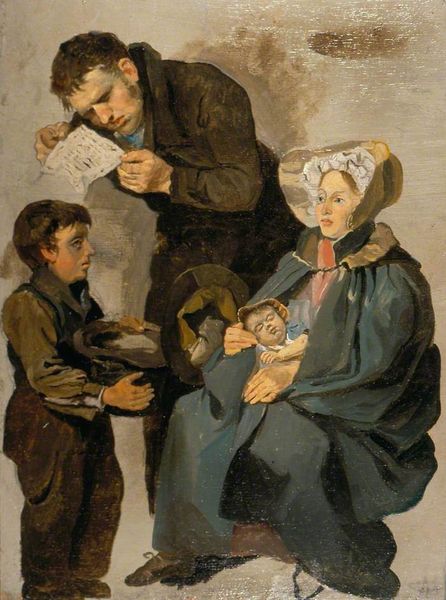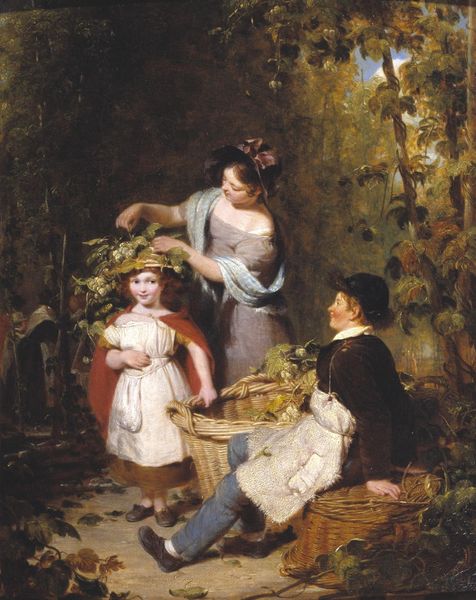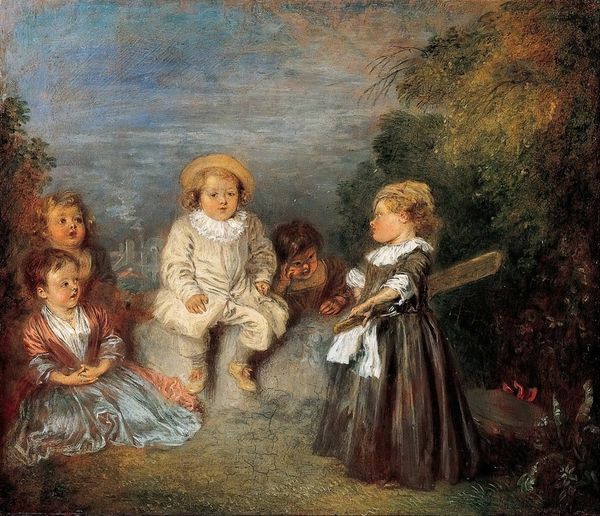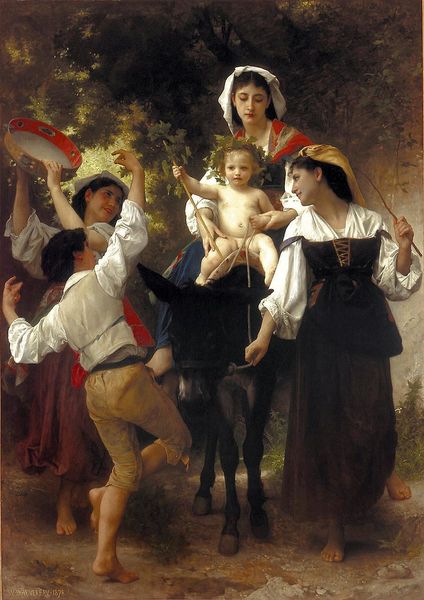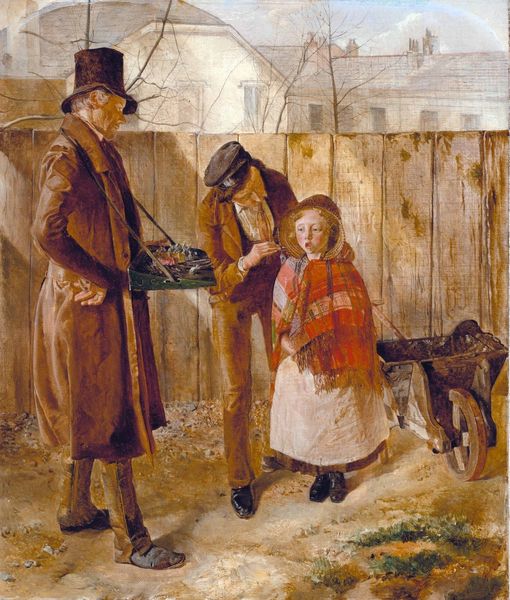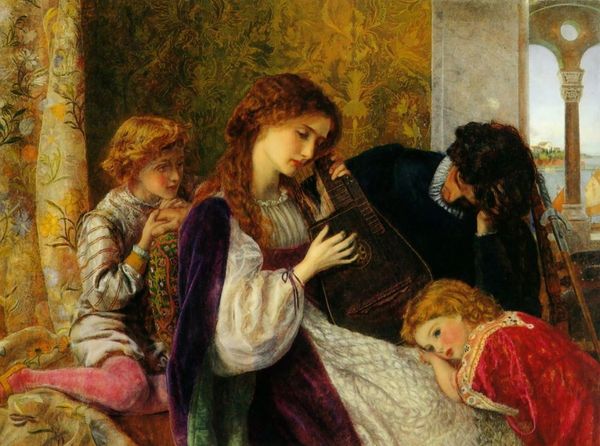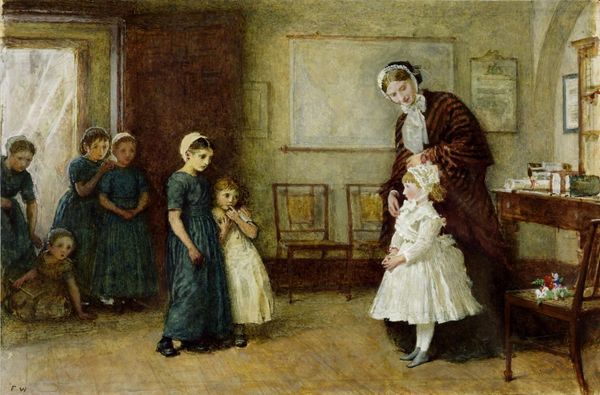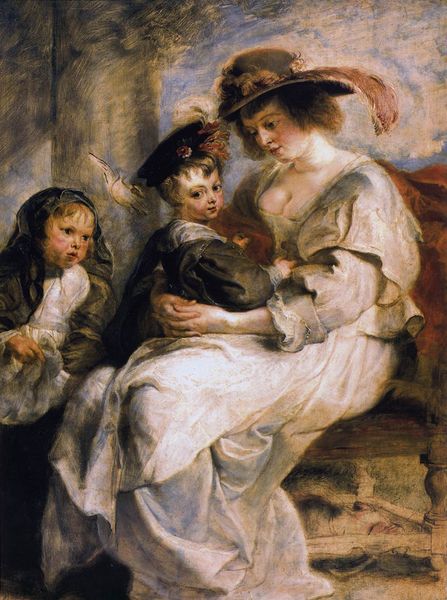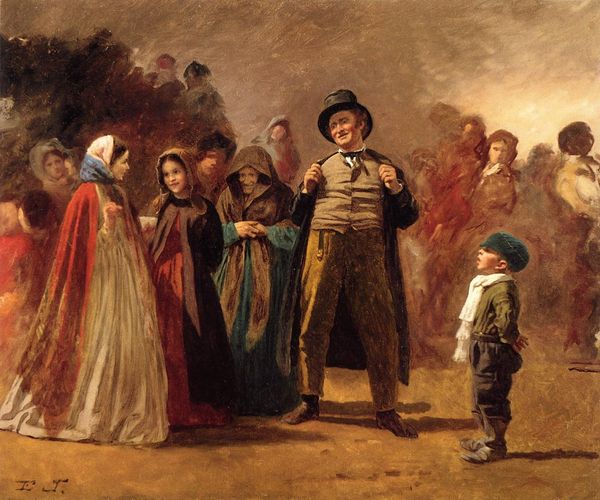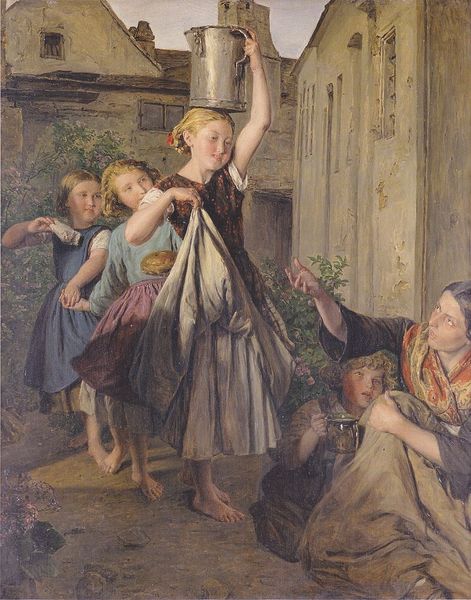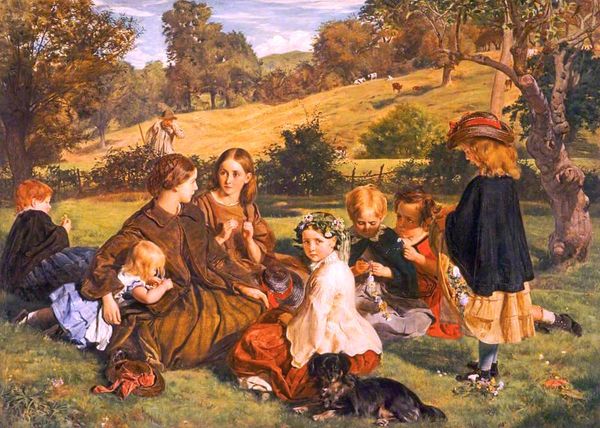
#
oil painting
#
portrait reference
#
acrylic on canvas
#
animal portrait
#
animal drawing portrait
#
portrait drawing
#
facial portrait
#
portrait art
#
fine art portrait
#
digital portrait
Copyright: Public domain
Editor: Here we have Renoir’s “The Artist’s Family,” created in 1896 using oil paint. Looking at the textures, it feels very… tactile. All those swirling brushstrokes! What strikes you about it? Curator: For me, the fascination lies in understanding Renoir’s artistic choices as reflective of the means of production. Notice the overt display of brushstrokes. This was a deliberate choice, moving away from illusionism towards emphasizing the material reality of paint on canvas. Consider too, the social context: the rise of industrialization. Editor: Industrialization? How does that tie in? Curator: Renoir is consciously showcasing his craft, his hand. Isn't he resisting the uniformity of mass-produced items? This also reflects the rising merchant classes. With money and power they could hire who they wanted in order to make family memories last a life time. By employing Renoir they could get a beautiful painting like the aristocratic society once would. Editor: So, by emphasizing the process and materials, he's making a statement about the value of individual artistic labor against a backdrop of increasing mechanization. Very clever! Curator: Precisely! The seemingly lighthearted depiction of family life is underpinned by a sophisticated commentary on artistic production. Even the seemingly simple act of choosing oil paints, readily available because of industrial advancements, becomes significant. And the artist uses these advances to build the upper-middle class vision and memories, just like a modern-day Instagram. Editor: That definitely gives me a new appreciation for the choices artists make and how they reflect the world around them. I’ll definitely keep material and context in mind moving forward. Curator: Agreed, recognizing and analyzing materials helps ground historical analysis and promote interesting art discourse!
Comments
No comments
Be the first to comment and join the conversation on the ultimate creative platform.
